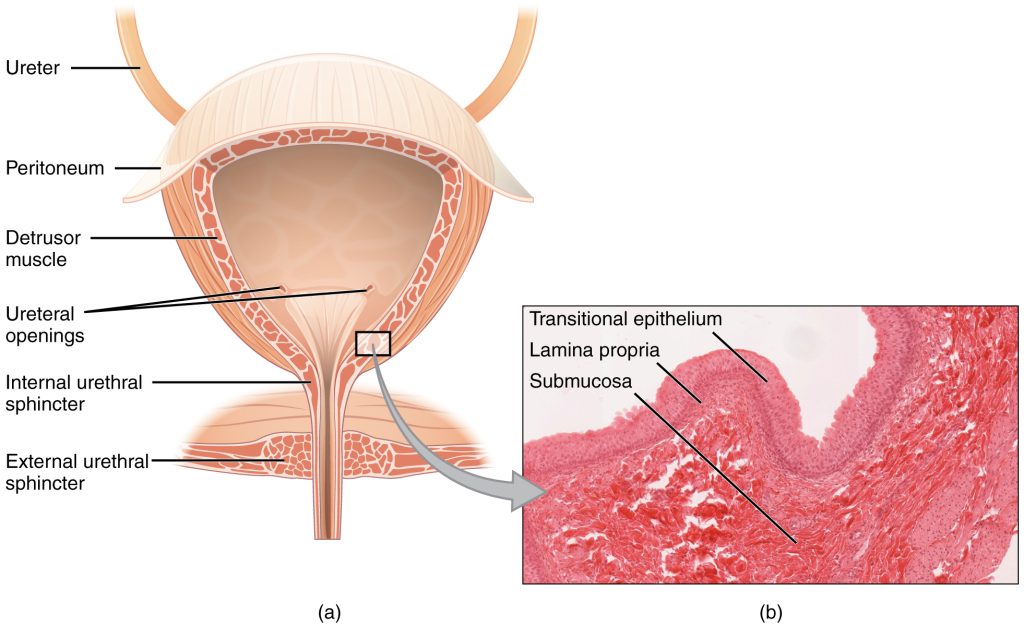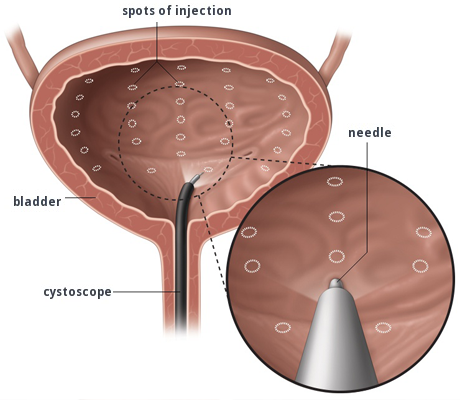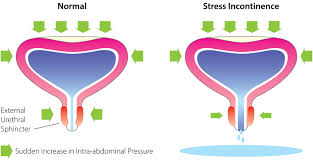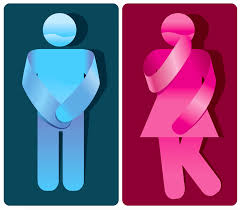 Could you benefit from mini slings for stress urinary incontinence? Stress urinary incontinence (SUI) is a common condition that affects many women, leading to involuntary urine leakage during activities that put pressure on the bladder, such as coughing, sneezing, laughing, or exercising. If you’re living with SUI, you understand the impact it can have on your daily life and self-confidence. Fortunately, medical advancements have brought forth innovative solutions like single incision Solyx mini slings, offering effective treatment options. In this easily readable guide, we’ll delve into the benefits of this groundbreaking approach to managing SUI.
Could you benefit from mini slings for stress urinary incontinence? Stress urinary incontinence (SUI) is a common condition that affects many women, leading to involuntary urine leakage during activities that put pressure on the bladder, such as coughing, sneezing, laughing, or exercising. If you’re living with SUI, you understand the impact it can have on your daily life and self-confidence. Fortunately, medical advancements have brought forth innovative solutions like single incision Solyx mini slings, offering effective treatment options. In this easily readable guide, we’ll delve into the benefits of this groundbreaking approach to managing SUI.
Understanding Stress Urinary Incontinence (SUI)
Before we explore the advantages of single incision Solyx mini slings, it’s essential to understand the condition they are designed to treat:
SUI occurs when the muscles and tissues that support the bladder and urethra become weakened or damaged, leading to urinary leakage when there is pressure on the bladder. Common causes include childbirth, hormonal changes, obesity, and chronic straining.
Traditional SUI Treatments
Traditionally, stress urinary incontinence has been managed through various methods, including:
- Pelvic Floor Exercises (Kegels): Strengthening the pelvic floor muscles can help reduce SUI symptoms.
- Lifestyle Modifications: Lifestyle changes, such as weight management and fluid intake adjustments, may provide some relief.
- Medications: Some medications can help tighten the urethral sphincter to reduce leakage.
However, these treatments may not always provide long-lasting or satisfactory results for all individuals with SUI. This is where single incision Solyx mini slings come into play.
The Advantages of Single Incision Solyx Mini Slings
Single incision Solyx mini slings represent a significant advancement in the treatment of SUI. Here’s why they are gaining recognition:
Minimally Invasive:
Unlike traditional surgical procedures, single incision Solyx mini slings are minimally invasive. The entire procedure is performed through a single small incision, typically resulting in less pain, shorter recovery time, and minimal scarring.
Effective Support:
The sling is placed under the urethra, providing support and preventing leakage when pressure is applied to the bladder. This support offers effective and long-lasting relief from SUI symptoms.
Quick Procedure:
The procedure itself is relatively quick, often taking less than 30 minutes to complete. Patients can typically return to their normal activities within a few days.
High Success Rate:
Single incision Solyx mini slings have shown a high success rate in improving or eliminating SUI symptoms, leading to improved quality of life for patients.
Mini Slings for Stress Urinary Incontinence: Schedule a Consultation with a Specialist
If you’re considering treatment for stress urinary incontinence and are interested in the benefits of single incision Solyx mini slings, consulting with a specialist is essential. Dr. Yaniv Larish at Fifth Avenue Urology is an expert in diagnosing and treating SUI. He will evaluate your condition, discuss your treatment options, and create a personalized plan tailored to your unique needs.
Don’t let stress urinary incontinence affect your daily life. Contact Fifth Avenue Urology today to schedule a consultation and explore how single incision Solyx mini slings can help you regain control and confidence.
Contact Information
FIFTH AVENUE UROLOGY
5 East 83rd Street
New York, NY 10028
Phone: 212-675-3186
Website: https://www.fifthavenueurology.com/
 Dr. Larish is a urologist and surgeon treating women and men with a variety of urological conditions. His expertise is in treating complex kidney stones, enlarged prostates (BPH), incontinence, erectile dysfunction, infertility, and urological oncology (prostate, bladder, kidney, and adrenal cancers). He is an expert in general urology and is often consulted for second opinions.
Dr. Larish is a urologist and surgeon treating women and men with a variety of urological conditions. His expertise is in treating complex kidney stones, enlarged prostates (BPH), incontinence, erectile dysfunction, infertility, and urological oncology (prostate, bladder, kidney, and adrenal cancers). He is an expert in general urology and is often consulted for second opinions.





 What are the main treatment options for urinary incontinence? UI can significantly impact your quality of life, making it essential to explore effective treatment options. Among the various approaches available, Botox injections and
What are the main treatment options for urinary incontinence? UI can significantly impact your quality of life, making it essential to explore effective treatment options. Among the various approaches available, Botox injections and  Could you benefit from mini slings for stress urinary incontinence? Stress urinary incontinence (SUI) is a common condition that affects many women, leading to involuntary urine leakage during activities that put pressure on the bladder, such as coughing, sneezing, laughing, or exercising. If you’re living with SUI, you understand the impact it can have on your daily life and self-confidence. Fortunately, medical advancements have brought forth innovative solutions like single incision Solyx mini slings, offering effective treatment options. In this easily readable guide, we’ll delve into the benefits of this groundbreaking approach to managing SUI.
Could you benefit from mini slings for stress urinary incontinence? Stress urinary incontinence (SUI) is a common condition that affects many women, leading to involuntary urine leakage during activities that put pressure on the bladder, such as coughing, sneezing, laughing, or exercising. If you’re living with SUI, you understand the impact it can have on your daily life and self-confidence. Fortunately, medical advancements have brought forth innovative solutions like single incision Solyx mini slings, offering effective treatment options. In this easily readable guide, we’ll delve into the benefits of this groundbreaking approach to managing SUI.

 Urge Urinary incontinence can significantly impact one’s quality of life, and urge urinary incontinence (UUI) is no exception. UUI, characterized by a sudden, strong urge to urinate and an inability to reach the toilet in time, is a condition that affects many individuals. In this blog, we will explore what UUI is, its causes, and the various medical treatment options available to help manage and improve this condition.
Urge Urinary incontinence can significantly impact one’s quality of life, and urge urinary incontinence (UUI) is no exception. UUI, characterized by a sudden, strong urge to urinate and an inability to reach the toilet in time, is a condition that affects many individuals. In this blog, we will explore what UUI is, its causes, and the various medical treatment options available to help manage and improve this condition.



 Urinary incontinence is quite a common condition among people of all ages. Millions of people in the United States alone suffer from Urinary incontinence. These people differ in age, race, and of course gender. While it is definitely more likely for women to have urinary incontinence, men also suffer from this condition at an unprecedented rate, but for very different reasons.
Urinary incontinence is quite a common condition among people of all ages. Millions of people in the United States alone suffer from Urinary incontinence. These people differ in age, race, and of course gender. While it is definitely more likely for women to have urinary incontinence, men also suffer from this condition at an unprecedented rate, but for very different reasons. There are many different types of Urinary incontinence and almost none of them are gender specific. Some of the most famous types of UI are the stress and urge UI. Both of these are very common among both men and women and each is very different. The stress condition is when urine start to leak when the body is put under the slightest amount of stress. This means that exercising, laughing, sneezing, and even coughing can lead to people urinating. Urge is completely different where people will feel a sudden urge to urinate but will not be able to make it to the bathroom in time.
There are many different types of Urinary incontinence and almost none of them are gender specific. Some of the most famous types of UI are the stress and urge UI. Both of these are very common among both men and women and each is very different. The stress condition is when urine start to leak when the body is put under the slightest amount of stress. This means that exercising, laughing, sneezing, and even coughing can lead to people urinating. Urge is completely different where people will feel a sudden urge to urinate but will not be able to make it to the bathroom in time. Generally speaking, urinary incontinence is a grave health issue where an individual’s ability to hold urine weakens or is completely lost. It is prevalent in geriatric or old people, and is more predominant in women, compared to men.
Generally speaking, urinary incontinence is a grave health issue where an individual’s ability to hold urine weakens or is completely lost. It is prevalent in geriatric or old people, and is more predominant in women, compared to men.